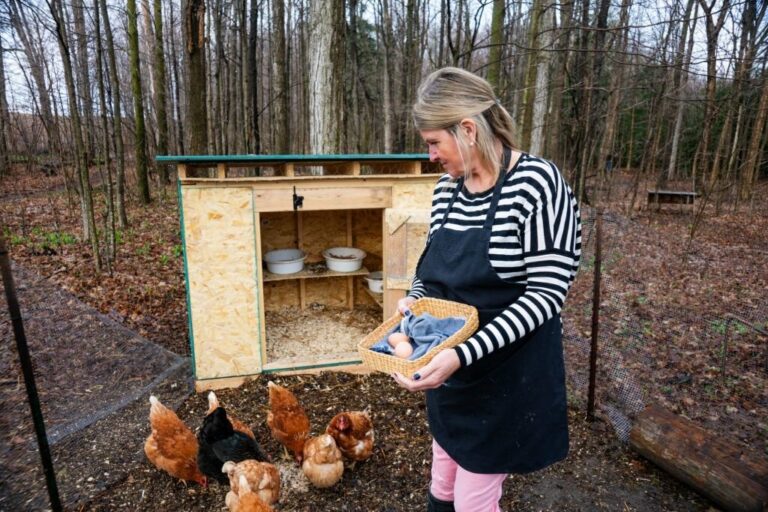Eco-Friendly Furniture Trends for a Greener Home
An increasing desire for eco-conscious living is driving a change in the furniture and decor business. The days of putting transient trends ahead of environmental responsibility are long gone. The design-aware consumer of today looks for décor and furniture that matches their aesthetic while leaving as little of an environmental impact as possible. Numerous eco-friendly furniture and décor ideas have emerged as a result of this exciting change, which not only benefits the environment but also adds a touch of distinctive beauty to your home.
Material Wonders: Building with a Sustainable Perspective
Our houses are no different as more and more of us work toward living greener lifestyles. However, how can a lovely and cosy area be created without compromising the surrounding environment? The materials you select for your furniture will reveal the solution! These wonderful environmentally friendly choices will make your house sing:
Reclaimed Wood: Have you ever thought that a piece of furniture has a backstory? Indeed, reclaimed wood is! Reclaimed from abandoned houses, shipwrecks, and ancient barns, it lends a sense of rustic beauty to your interior. Additionally, you’re decreasing the need for new trees by giving unwanted wood a new use.
Recycled Plastics and Metals: Who said garbage couldn’t be treasure? Repurposed plastic and aluminium are being beautifully transformed into unique furniture. It’s incredible what a little upcycling and inventiveness can accomplish!
Bamboo: This marvel of rapid growth is a sustainability advocate. In addition to being a renewable resource, bamboo has exceptional strength and versatility. Bamboo is a terrific alternative if you’re searching for elegant chairs or a new dining table.
Want to give your area a bit of natural texture? Try adding jute, cork, or rattan. You only need to consider rattan, cork, and jute. These exquisite materials are kind to the environment and let the outside in.
Changing the World, One Bit at a Time:
FSC-Certified Wood: Verify that the new wood furniture you purchase bears the FSC certification. Because of this accreditation, you can be sure that the wood is sourced from responsibly managed forests and that your purchase isn’t causing further deforestation.
Beyond Drugs: Sustainable Design Ideas
Selecting sustainable materials is one aspect of eco-friendly furniture and décor. Think about the following design tenets:
Sturdiness Is Crucial: Invest in high quality, long-lasting furnishings. By reducing the need for frequent replacements, this reduces waste. Keep an eye out for high-quality textiles, solid wood structure, and strong joinery techniques.
Multifunctionality Is Vital: Acknowledge furniture that serves multiple purposes. A futon that transforms from a couch to a bed or an ottoman with hidden storage are two examples of furniture that saves space while simultaneously promoting environmental consciousness by reducing the need for additional components.
Local Love: To lessen your carbon impact, use furnishings and décor made of locally sourced materials. This improves your community and reduces pollution caused by transportation.
Low volatile organic compound (VOC) coatings: Many conventional furniture coatings include volatile organic compounds (VOCs), which are harmful to both the environment and human health. Choose furniture that has been finished with natural oils, waxes, or water-based finishes.
Moving Beyond Decor and Furnishings: Taking a Holistic Approach
A really eco-friendly house is more than just a place with the appropriate furniture and accents. Consider including these additional elements:
Sustainable Materials: Use organic cotton, hemp, or linen for cushions and upholstery. Not only are these organic fibres warm, but they also biodegrade.
Energy-Saving Lighting: Compared to regular bulbs, LED lights have a longer lifespan and use less energy.
Incorporate plants into your house design for a biophilic look. Plants not only purify the air but also contribute to a calming and energising atmosphere.
Selecting the Perfect Fit: Sustainable Resources for Retailers
Before furnishing your home sustainably, do some homework. The following pointers will assist you in getting going:
Look for certificates: Look for furniture and décor that has obtained certificates, such as FSC for wood or GOTS for organic materials.
Promote Eco-Conscious Brands: For many producers of furniture and décor, sustainability is a primary concern. Investigate businesses who source ethically and employ ecologically friendly manufacturing techniques.
Examine Antique and Repurposed Treasures: Thrift stores and internet markets offer a plethora of unique objects with intriguing histories. Upcycling old furniture is a great way to be environmentally mindful while still adding a personal touch.
Conclusion :
The market for eco-friendly furniture and décor is no longer a niche one. Because people are becoming more conscious of their impact on the environment, sustainable design is becoming the standard. You may design a stunning, useful, and environmentally friendly home that honours the environment and represents your beliefs by adopting these ideas. Recall that little adjustments added together over time have a big impact. So, start your journey toward sustainable furniture and design right now and turn your room into a stylish, eco-friendly paradise.
FAQs
What are some guidelines for selecting sturdy furniture?
Seek for furniture with premium textiles, sturdy joinery, and solid wood construction.
In what ways might multipurpose furniture benefit the environment?
Furnaces and ottomans with storage are examples of multipurpose furniture that minimizes waste by reducing the need for numerous pieces of furniture.
Why is the place of manufacture of furniture a factor to consider?
Reducing your carbon footprint can be achieved by selecting furniture manufactured from locally produced materials.
I should search for low-VOC coatings; what are they?
Compared to typical furniture finishes, low-VOC coatings are better for the environment and your health.
What eco-friendly materials are available for cushions and upholstery?
For eco-friendly pillows and furniture, hemp, linen, and organic cotton are all excellent options.
In what ways does energy-efficient lighting contribute to a greener home?
LED lights are more energy-efficient and last longer than conventional bulbs.



